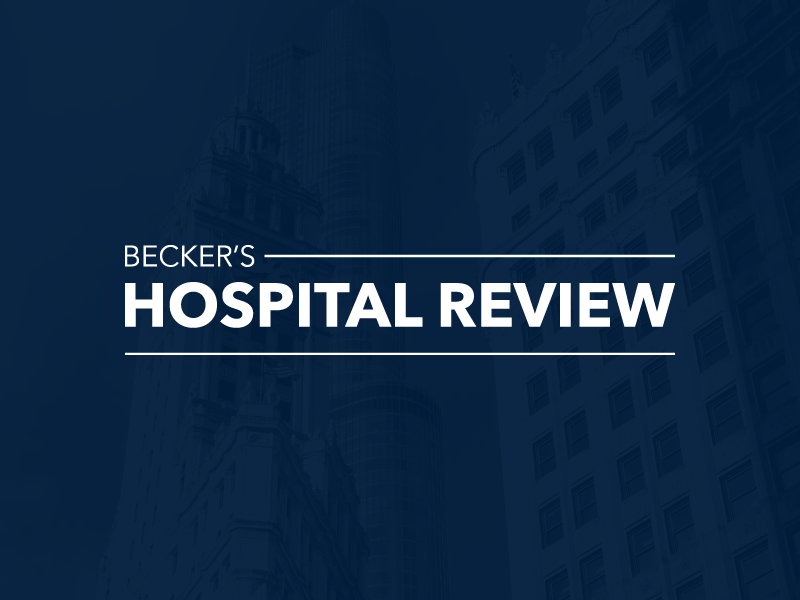
U.S. health officials are closely monitoring COVID-19 activity in the U.K., where cases and hospitalizations are simultaneously rising due to omicron subvariant BA.2, though many experts say it's too soon to accurately predict if or when a similar uptick in virus activity may hit the U.S.
"We'd better be careful, because history has taught us that what's gone on in the U.K. generally happens to us three or four weeks later," Dr. Fauci said during a March 17 meeting among House Democrats, according to Bloomberg.
However, epidemiologists and COVID-19 forecasters say the timeline for a potential increase in cases is still unclear. Predictive modeling from Rochester, Minn.-based Mayo Clinic projects average daily COVID-19 cases in the U.S. will decrease 8.2 percent over the next two weeks. Forecasters predict this figure will fall from 26,110 cases on March 16 to 23,961 cases by March 30, though they note there is an uncertainty interval for this future date.*
Health experts nationwide have pointed to several important caveats that complicate COVID-19 forecasting and "tug the U.S. experience away from the European one," Bill Hanage, PhD, associate professor of epidemiology at the Harvard T.H. Chan School of Public Health in Boston, said in a March 16 press call, according to The Atlantic.
The country's differing infection patterns, variant proportions, vaccination rates and pandemic policy are all factors that could throw a wrench in the "Europe-then-America" trend, experts said.
"I think there's a few different factors that are going to affect spread, and it may vary geographically from point to point," Beth Thielen, MD, PhD, an adult and pediatrics infectious disease physician at the University of Minnesota Medical School and M Health Fairview in Minneapolis, told Becker's. "So one area of the world may not behave exactly like another area."
Historically, COVID-19 modelers have had difficulty determining how public health policy and Americans' behaviors affect case rates. That means the nation's loosened public health restrictions and Americans' return to daily activities could actually make COVID-19 modeling more accurate. However, models have struggled with critical change points in the pandemic's trajectory over the past two years, according to Shaun Truelove, PhD, an epidemiologist at the Johns Hopkins Bloomberg School of Public Health in Baltimore.
Lauren Ancel Meyers, PhD, director of the COVID-19 Modeling Consortium at the University of Texas at Austin, said more time is needed to see whether cases start to plateau or increase in parts of the U.S. She said COVID-19 predictions will likely improve within the next week or so, according to The Atlantic.
Several unanswered questions about the omicron subvariant also create forecasting uncertainty. For example, Dr. Meyers said more information on the duration of natural immunity after an omicron infection is needed. The reinfection risk from BA.2 is also still unclear for people infected by BA.1 and BA.1.1, the most common omicron strains to spread in the U.S. this winter.
Dr. Thielen said it's hard to say when modeling on the pandemic's trajectory will improve. She pointed to wastewater data as a potential early indicator that could help the U.S. refine its sense of how much the virus is circulating. However, this data still may not account for the extent to which people are protected from severe disease from vaccination and prior infection.
"If the population is highly vaccinated, we may not see a lot of disease, but we may still see a lot of virus circulating in the community or being spread as sort of mild cold-like illnesses," Dr. Thielen said. "So I think we'll still probably need to see a little bit of what that actually looks like in terms of how much disease burden it actually causes."
*Note: Mayo Clinic uses a Bayesian statistical model to forecast cases that automatically updates as new data becomes available. There is an uncertainty interval for forecast values, with lower and upper bounds that are not included in this list. To learn more about the data Mayo Clinic uses to forecast hot spots, click here. Becker's pulled the forecast values March 18 at 2:25 p.m. CDT.
"right" - Google News
March 19, 2022 at 04:58AM
https://ift.tt/KINb0up
The caveats of COVID-19 forecasting right now - Becker's Hospital Review
"right" - Google News
https://ift.tt/ReJHxW5
Bagikan Berita Ini















0 Response to "The caveats of COVID-19 forecasting right now - Becker's Hospital Review"
Post a Comment